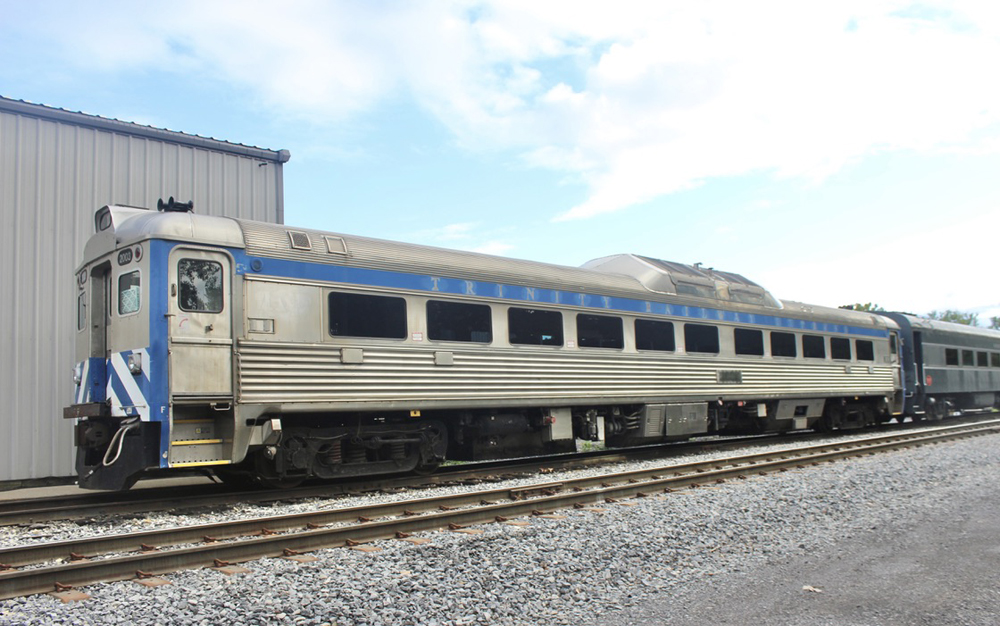
ROCKLAND, Maine — Loss of a freight customer that supplied more than 95% of Midcoast Railservice’s revenue on the 57-mile Rockland branch leased from Maine’s Department of Transportation has prompted the Finger Lakes Railway subsidiary to exit the property.
The move upends plans the state, Northern New England Passenger Rail Authority, and Amtrak had been working on with Midcoast to operate scheduled passenger service as an extension of the Boston-Brunswick, Me., Downeaster corridor
“Our lease agreement is that we give Maine DOT 120 days’ notice, but they told us they won’t hold us to that,” Midcoast President Mike Smith tells Trains News Wire, adding, “They have been very cooperative all along, recognizing that with the departure of Dragon Cement, it’s not possible for us to move forward.”
The pilot plan
Before Midcoast assumed the lease in August 2022 that Maine previously granted to a short line subsequently acquired by Canadian Pacific, the company had suggested operating Budd Rail Diesel cars on the branch to connect with Amtrak’s Downeaster at Brunswick.
At its own expense, Midcoast designed and installed an accessible bathroom in a leased RDC at Finger Lakes’ Geneva, N.Y., shops when News Wire visited during the month the Maine takeover occurred.
“The first accessible bathroom cost us $75,000 but we were able to do one in a second RDC for $25,000,” Smith says. “Why pay a consultant to study whether a service will be viable if you can spend the same amount of money to find out, ‘Hey, there’s a market here, or maybe there isn’t,’ ” he reflected recently.
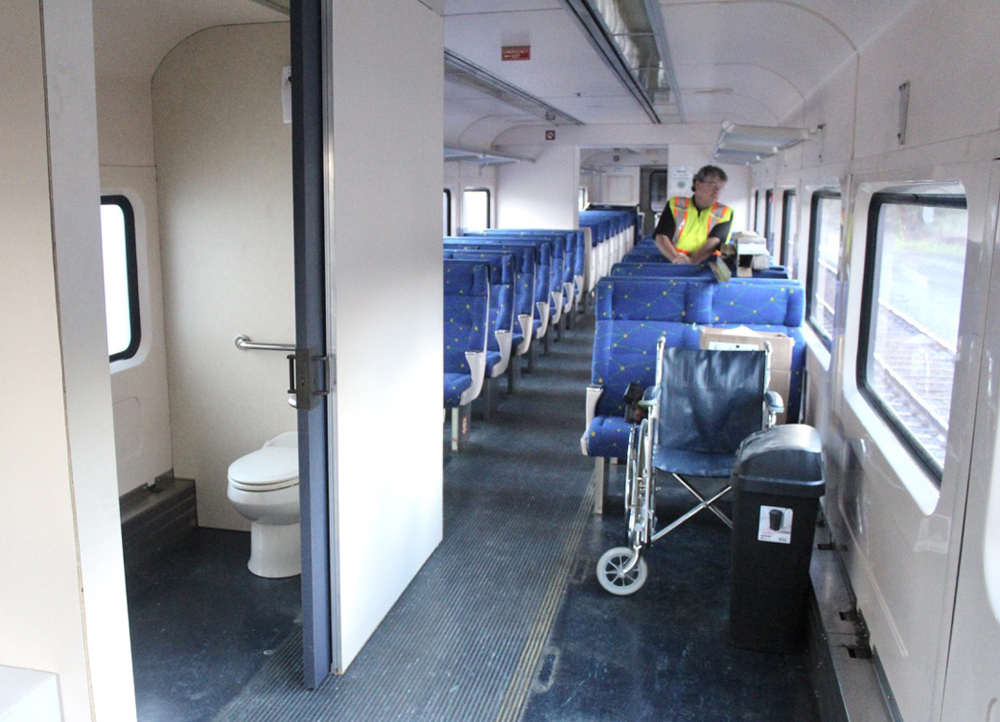
Downeaster Executive Director Patricia Quinn was onboard with testing the concept. In an August 2022 News Wire interview, she said the Maine Department of Transportation and Amtrak were both supportive. “Ideally, I would like to see three round trips per day, seven days per week, that would provide connectivity in both directions,” she told News Wire then. In early 2023, the state agreed to provide $3 million for a two-year demonstration test [see “Maine DOT proposes $3 million for pilot of Brunswick-Rockland RDC service,” News Wire, Feb. 2, 2023].
The newly dubbed “Coastliner” equipment moved to Rockland last summer and participated in sold-out excursions to the popular Rockland Lobster Festival and other events.
Then the innovative, “let’s just try it” plan began to unravel. Midcoast was informed by the RDC owner, AllEarth Renewables of Barre, Vt., that it was selling the entire RDC fleet in 2024 to interests in Quebec for use on a line once used by VIA Rail Canada’s Montreal-Gaspe Chaleur, although that route was still undergoing rehabilitation. The news came after one of the cars suffered a mechanical failure during a fall excursion [see “Downeaster’s Rockland branch experiment encounters equipment snag …,” News Wire, Jan. 25, 2024].
By then, Midcoast had already learned that primary freight customer, Dragon Cement, was considering shutting down, which that company later confirmed. Continuing efforts to attract other carload shippers failed to bear fruit — in part, says Smith, because the connecting Class I carriers “don’t seem to be willing to price to get the business.”
Host agreement and insurance costs
Though Midcoast, Maine DOT, NNEPRA, and Amtrak began working on a plan to extend at least one Boston-Brunswick, Me., round trip to Rockland utilizing one or more Downeaster trainsets, the cost equation dramatically changed for Midcoast. According to Smith, “We put together a host railroad agreement which would cover the expenses of what is essentially a passenger railroad from the rails down: track inspections, signal and bridge inspections, dispatching, and employees. With freight service five to 10 cars per month — an impossible volume of business to support a 57 mile railroad, costs would continue, and someone would have to pick up those costs if there were to be passenger service.” While Smith declined to disclose the exact amount of Midcoast’s proposal, he pegged it in “the high six-figure” range.
Smith stresses that the Maine DOT has been excellent to work with, “providing maintenance and emergency repair money associated with bad weather in the spring. We’ve also had a positive experience working with Amtrak; they are enthused about doing things.”
He notes, however, “the real cruncher is insurance. Amtrak requires $325 million in insurance that is only available from brokers in Bermuda or London. If you can get it, the annual premium would be about $2.5 million with a deductible of about $25 million. So you would have to go into the reinsurance market in order to get coverage for the deductible,” Smith says.
Like tourist railroads, whose insurance rates are not arbitrarily set by statute but are the result of the industry’s claims experience, Midcoast has operated “excursions” on a policy that costs a fraction of intercity passenger rail requirements.
“Our view,” Smith says, “[is] negotiations with Amtrak and the insurance carriers would be an extended discussion and we weren’t confident we would see the money that we would need.”
New operator sought
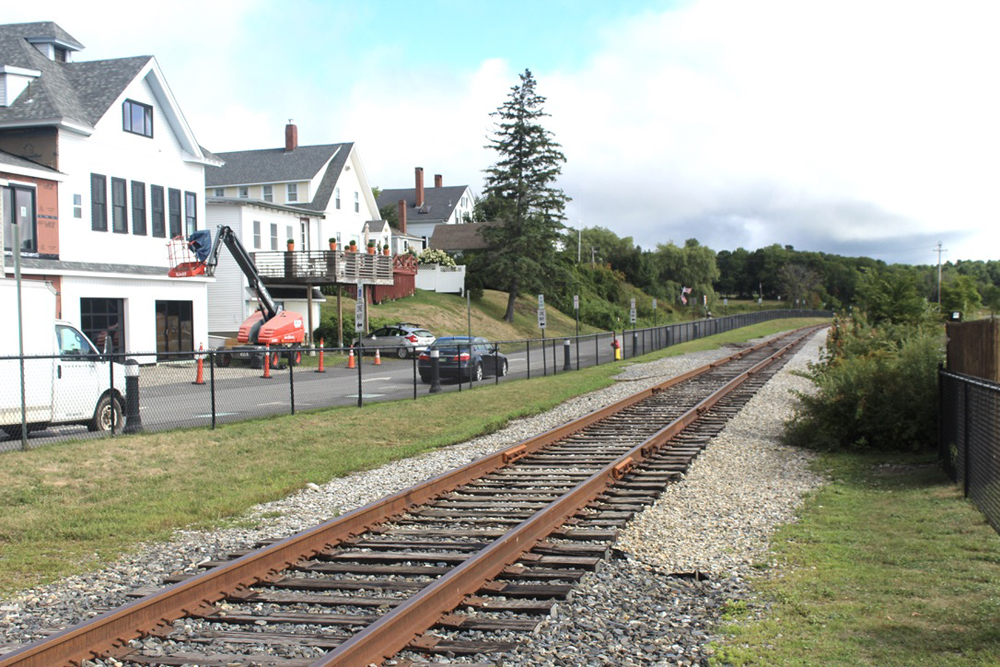
Maine DOT spokesman Paul Merrill tells News Wire the $3 million of pilot funding “is still in our Work Plan. We haven’t reached a final decision on the pilot project, but having Midcoast as an operator was a key component. Our work [with NNEPRA and Amtrak] to find interested operators and funding opportunities for a seasonal service will continue, but the absence of a freight operator on the line creates further headwinds.”
The statement continues, “We are disappointed that business circumstances have forced Midcoast to give up the service, but we understand that it cannot continue to operate the line with significant losses. Maine DOT will work with current shippers on the line to see if there are any cost-effective service scenarios or transload opportunities for their products. We will also investigate and see if there are any reputable rail operators willing to operate the line and service the remaining customers on the Rockland branch.”
In an email to News Wire, the Downeaster’s Patricia Quinn says, “This development is disappointing, but we certainly understand the difficult decision made by Midcoast Railservice given the constraints they faced. NNEPRA continues to work with Amtrak and Maine DOT to explore options and determine next steps.”






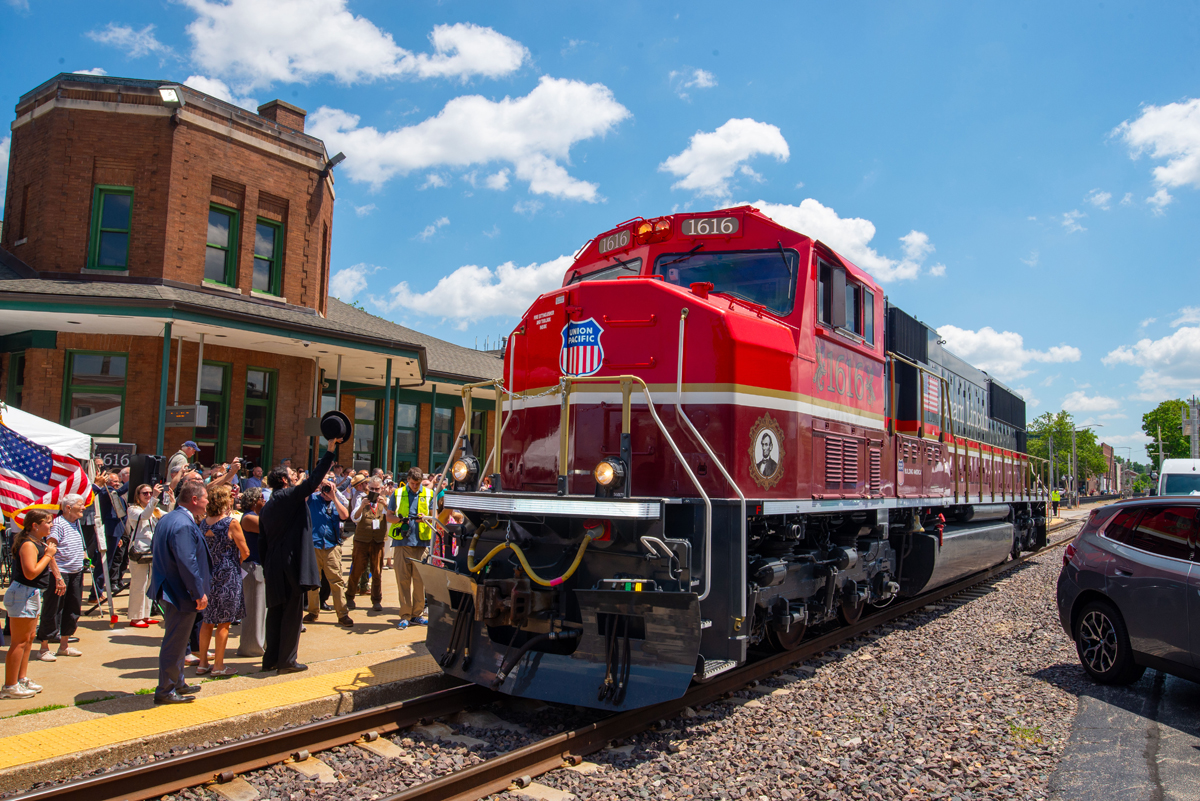
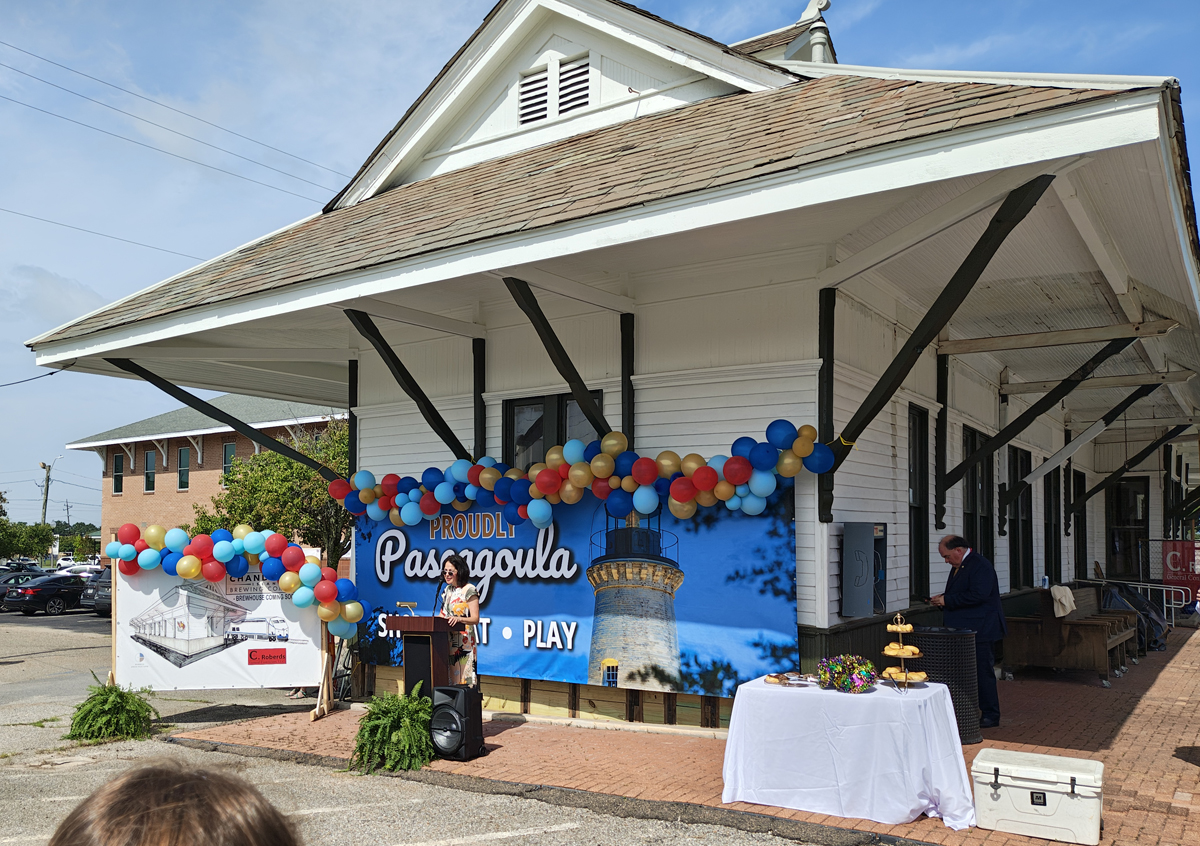
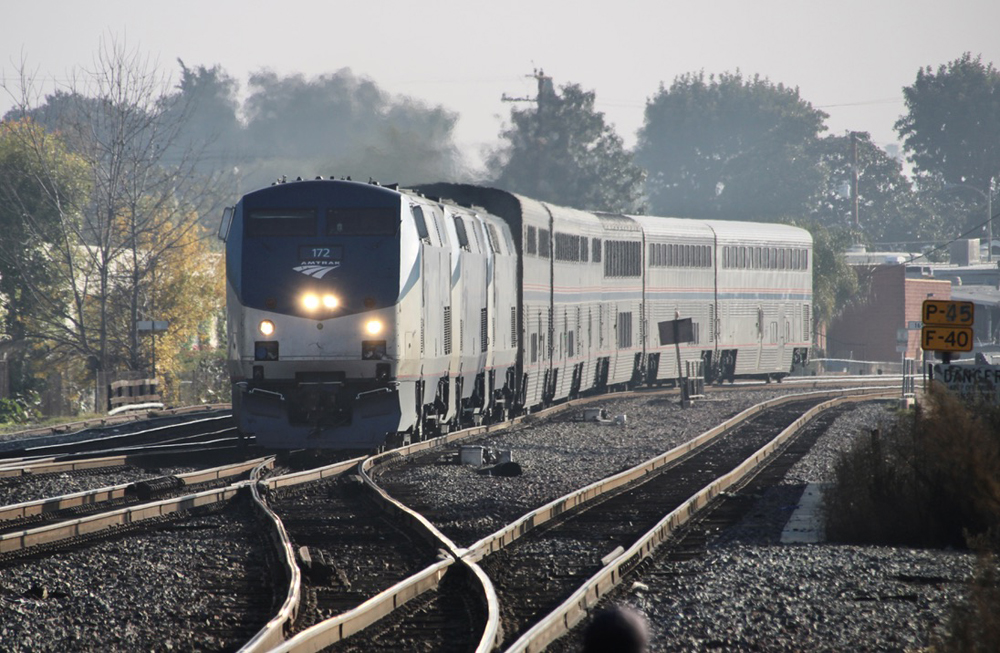
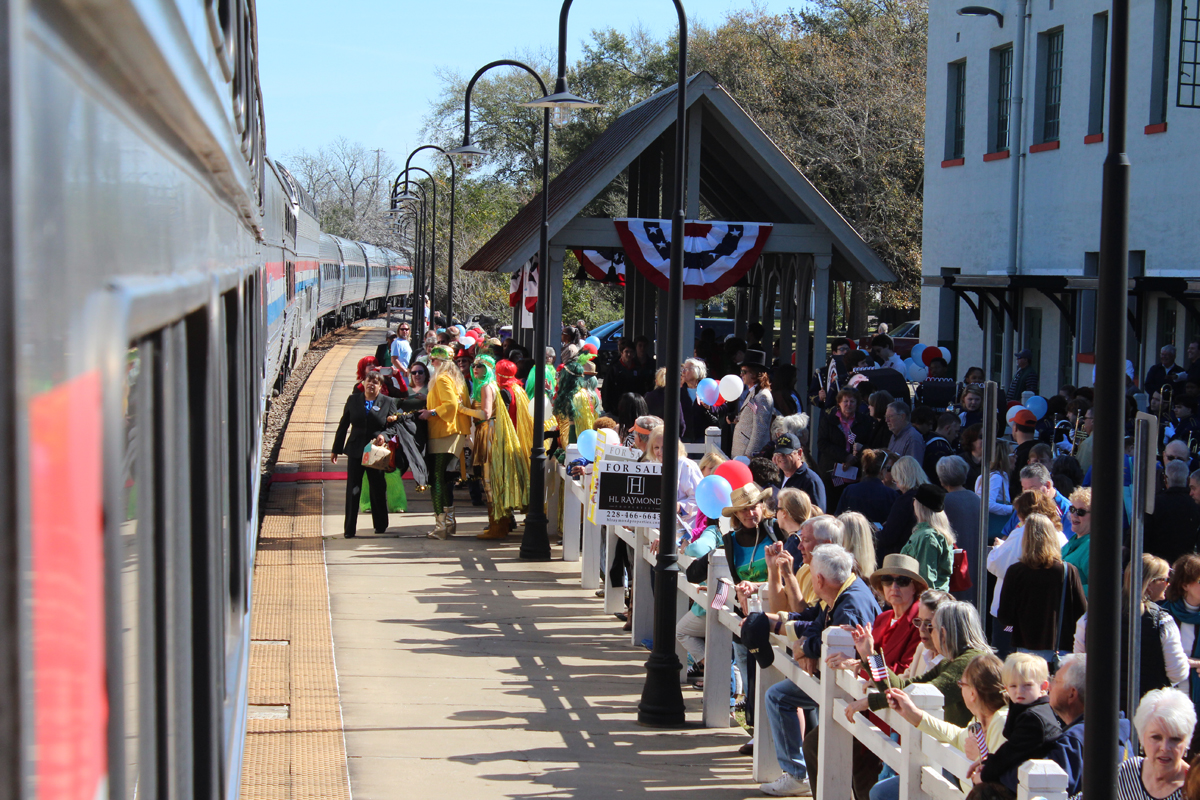




Mark,
I agree generally with your freight analysis, but bear in mind in the case of the SW Chief, the BNSF management people I’ve talked with are very happy to keep the Chief where it is and off the Transcon between Kansas and Dalies, N.M. They rather pay some part of keeping the Raton Line open (and BNSF does indeed pay, in addition to taxpayers) to keep the Chief from gumming up the works. I do think that if Maine really wants to have passengers trains on the line, just bite the bullet and spend the money to keep the 57 miles of track in shape for passengers and if you can find someone to handle the small amount of freight when needed be so be it.
I don’t understand how this about Midcoast. At 5-10 cars a month on 57 miles of track, as stated in the article, I would think the line is inches away from being mothballed anyway. IF Amtrak, Maine DOT and the NNEPRA want trains on this route, they would have to pay for it anyway. Just do it and be done with it. Instead, it willed be studied to death and millions more wasted.
Too bad, but this just another example of people not understanding how rail freight traffic subsidizes passenger trains (except on routes like the Northeast Corridor where there is sufficient passenger traffic to basically justify its own right-of-way and a way to support its maintenance). Having a rail line in place is one thing. Running a passenger train on it is another. Having the line capable of being maintained for passenger train speed in perpetuity is something altogether different. Keeping the Southwest Chief on its traditional route across Northern New Mexico is the gift that keeps on giving because it shows how there has to be recurring additional subsidy to maintain the route (the most unfriendly freight route in the country) for a passenger train. The millions spent every year could have by now easily established stations on the route via Clovis and paid for power switches on the wye in Albuquerque. Instead, the albatross continues where the money could be better spent elsewhere. It’s hard to see any different outcome for the Rockland branch other than recurring state support. And this mindset continues to the FRA study with several routes proposed to use routes with little or no freight traffic support it, with by far the most-ridiculous being the Minneapolis/St. Paul-to-Denver route zigzagging through South Dakota on a lot of trackage good for 10 to 25 MPH, and with minimal freight traffic to support anything going any faster. It’s time to invest in routes with frequent freight traffic, and enhance that infrastructure so it can handle more passenger trains so Amtrak can actually achieve relevance. But in Bath (ME), Oelrichs (SD), and Wagon Mound (NM), passenger trains don’t need to be there because – and this just the way things are in today’s American railroading – there isn’t the freight traffic to support it.